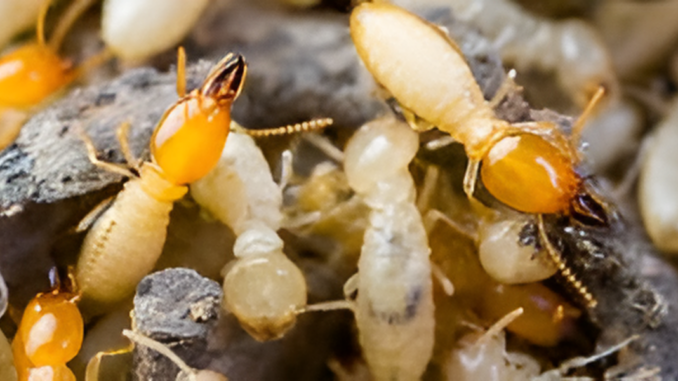
How Do Termite Colonies Develop in Zimbabwe?
Are you looking for termite control in Harare and Zimbabwe? Call 0772593344 for effective and affordable termite control in Zimbabwe
Termites are fascinating creatures that play a vital role in various ecosystems across the globe. In Zimbabwe, a nation characterized by diverse climates and rich biodiversity, termite colonies thrive particularly well. Understanding how these colonies develop in Zimbabwe involves exploring their biology, environmental influences, and the geographical aspects that contribute to their establishment. This blog post aims to delve into the intricate process of termite colony development, shedding light on the unique conditions found in Zimbabwe that facilitate their growth and sustainability.
The Biology of Termites
Termites, belonging to the order Isoptera, are social insects that live in complex societies. A typical termite colony consists of three main castes: the reproductive individuals (king and queen), the soldiers, and the workers. These castes perform specific roles vital for the survival and growth of the colony.
1. The Reproductive Caste
At the heart of termite colony development is the reproductive caste. The queen, often the most prominent member, has the crucial task of laying eggs. A single queen can lay thousands of eggs daily, with certain species capable of producing millions of offspring over several years. The king, whose primary function is to mate with the queen, supports her reproductive efforts. In Zimbabwe, the climate and food availability greatly influence the breeding cycle of termites, affecting their population growth.
2. The Worker Caste
Workers are the backbone of the termite colony. They are responsible for foraging, caring for the young, and maintaining the nest structure. In Zimbabwean ecosystems, the availability of organic material, such as decaying wood and leaf litter, is critical. Termites are decomposers, and their role in breaking down cellulose material promotes nutrient cycling in the soil, enhancing agricultural productivity in the region.
3. The Soldier Caste
Soldiers protect the colony from predators, particularly ants and other insects. Their presence is crucial in areas where the colonies are exposed to various threats. In Zimbabwe, where wildlife interactions are common, the soldier caste enforces the colony’s defense mechanisms, ensuring the survival of the reproductive and worker individuals.
Environmental Factors Influencing Termite Development in Zimbabwe
Termite colonies do not develop in isolation; they are shaped by their environment. The development of termite colonies in Zimbabwe is significantly influenced by several environmental factors including climate, soil composition, vegetation types, and geographic location.
1. Climate
Zimbabwe experiences a subtropical climate with distinct wet and dry seasons. The availability of moisture during the wet season promotes the growth of microflora and plant life, providing ample food sources for termites. The warmth also aids in the rapid development of colonies. In contrast, during the dry season, some termite species engage in modified behaviors such as decreased foraging or entering a state of dormancy, which can affect colony growth rates.
2. Soil Composition
The type of soil in which termites establish their colonies has a profound impact on their development. In Zimbabwe, clay soils are prevalent and offer favorable conditions for mound construction. These mounds serve as nests that regulate moisture and temperature, providing a stable environment for the colony. Additionally, certain soil types assist in nutrient acquisition, which is essential for the sustenance of the colony.
3. Vegetation Types
The diverse flora of Zimbabwe, ranging from savannas to woodlands, provides a variety of organic materials for termites to consume. Grasses, shrubs, and trees contribute to the diet of termites, allowing them to thrive. Some species of termites have adapted to specific vegetative environments, leading to a diversity of colony types suited to their local habitats.
4. Geographic Location
Termite colonies often vary in size and structure within different regions of Zimbabwe. For instance, in the more arid areas, termite colonies may form smaller, more dispersed mounds, while in the lush regions, larger and more complex colonies can be found. This geographic differentiation is essential for understanding how termite populations interact with their environments.
The Life Cycle of a Termite Colony
Termite colony development can be understood as a dynamic life cycle, which includes several critical stages:
1. Colony Initiation
Most termite colonies begin with a mating pair (the king and queen) that finds a suitable location to establish their home. In Zimbabwe, this often occurs in rotting wood or soil that is enriched with organic materials. The newly mated couple excavates a small chamber, where the queen lays her first few eggs.
2. Colony Growth
As the first batch of eggs matures into nymphs, these young termites begin to assume roles within the colony. Workers start to emerge, and their presence allows for a quicker accumulation of resources. The colony can grow rapidly during this stage, as the newly mated queen continues to lay eggs. In optimal conditions, colonies can reach hundreds or even thousands of individuals within a few years.
3. Colony Establishment
With a growing workforce, the colony begins to expand its nest. Workers will continue to construct intricate tunnels and chambers, optimizing the living space. This period sees the establishment of a colony’s social structure and the specialization of roles among the castes. If the environmental conditions remain favorable, the colony can become self-sustainable.
4. Reproductive Swarming
In mature colonies, reproductive swarming occurs, typically at the onset of the rainy season. Winged alates (reproductive individuals) take flight to establish new colonies. This is a critical phase for the species’ survival, as it allows genetic diversity and the spread of colonization across the landscape.
Interactions with Ecosystems
The development of termite colonies has far-reaching implications for the surrounding ecosystems in Zimbabwe. Their role as decomposers plays a significant part in nutrient cycling, soil aeration, and moisture retention. By breaking down dead plant material, termites contribute to the formation of rich, fertile soils that support plant growth, benefiting agriculture and the natural landscapes.
Additionally, the mounds built by termites serve as habitats for various other organisms, including reptiles, birds, and other insects. In this way, termite colonies represent not just a singular social unit but a vital component of the broader ecological web.
Conclusion
Understanding how termite colonies develop in Zimbabwe provides insightful perspectives into the relationship between insects and their environments. By examining the biological structure of termites, the environmental conditions that influence their growth, and the ecological roles they play, we can appreciate the complexity of their life cycles and their essential contributions to the functionality of ecosystems. Termite colonies are not only remarkable from a biological standpoint but also serve as indicators of environmental health, making them a focal point for ecological studies in Zimbabwe and beyond. As we continue to recognize their importance, conservationists and researchers alike strive to ensure that these industrious insects remain a thriving component of Zimbabwe’s rich biodiversity.


